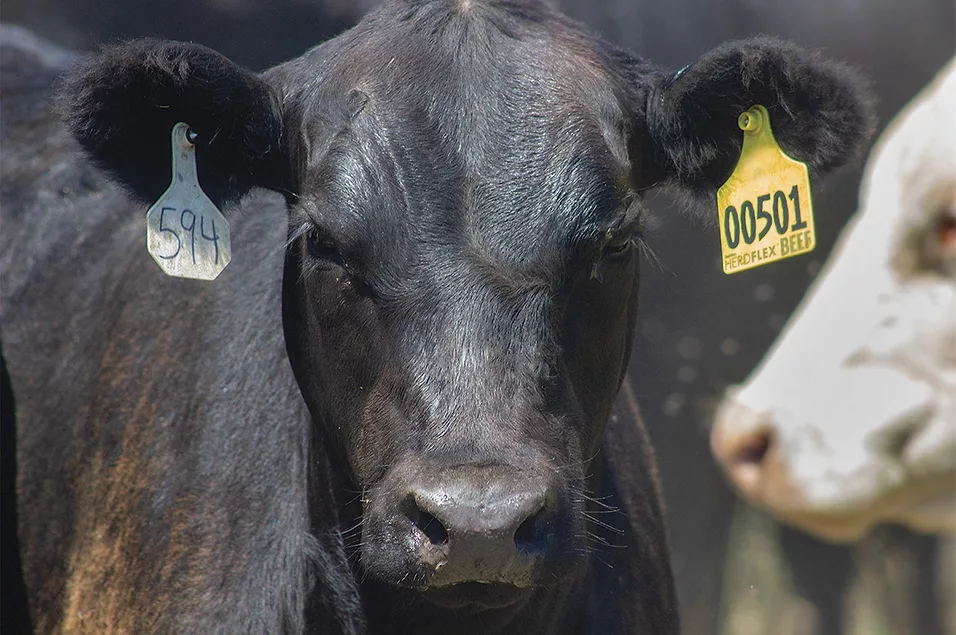Beef prices remain strong, providing strong incentives for dairy producers to stay bullish on beef-on-dairy investments.
The June 2025 USDA Economic Research Service report indicates that the forecast for 2025 finished steers has been raised to $221.51 per hundredweight (cwt). The outlook for 2026 slaughter steer prices has been raised $5.75 in May to $228.50 per cwt, based on the price strength from 2025 being carried over into 2026. Overall, the 2025 annual forecast is raised to $297.78 per cwt. The outlook for 2026 feeder steer prices is unchanged from May at $306.25 per cwt.
Other beef value chain signals, like the still-small national beef herd, suggest the window remains open for dairies to hone their beef marketing skills.
Just as there’s no single way to run a dairy farm, the same goes for getting involved in the beef-on-dairy market. Here are some factors to ruminate on.
Strategies to consider
For many dairy producers who have adopted beef-on-dairy programs, marketing day-old calves remains a favored option, especially those with limited space to house youngstock. These calves, especially bull calves, continue to bring a premium compared to dairy breed offspring, except replacement heifers.
As a result, many dairies have turned to full-beef embryos to deliver what the beef value chain seeks – consistent, efficient animals that perform well in feedlots.
Research at Texas Tech University helps explain at least some of the difference between beef and dairy breeds. It shows:
When adjusted for size at maturity, straight-bred beef cattle had better feed efficiency than dairy-beef crossbred cattle.
Straight-bred beef calves raised on calf ranches or traditional cow-calf systems performed similarly.
Dairy genetics increased the carcass leanness of crossbred calves.
Full-beef calves also demonstrate a better feed-to-gain performance than crossbred calves, averaging a 6.6 pounds per day feed-to-gain ratio compared to crossbred calves at 7.1 pounds per day.
Dairies that cultivate strong relationships and build a reputation as a preferred supplier are usually able to reap the most significant revenue from these transactions. New opportunities to develop these markets arise often. Investigate options and evaluate decisions based on what’s best for your farm.
Strengthen partnerships
Current market conditions have altered profit possibilities for full-beef calves in a dairy system. Farms with available space may want to consider retained ownership options, especially with new research demonstrating the feed efficiency edge full-beef calves bring. Feed efficiency is always a critical standard for cattle feeders, meaning it’s worth dairy producers taking another look at the role of full-beef calves and crossbreds originating from dairy systems.
Focus has shifted from short-term returns to taking a longer view of profitability. Some farms raise beef-on-dairy calves to the 400- to 500-pound range, then sell these animals as stocker cattle. These animals are generally grazed on native grass or other forages until they reach approximately 850 pounds, at which point they enter a feedlot for finishing.
Retaining animals until this phase requires a greater investment by the dairy in terms of inputs and facilities, but it can be a profitable option to consider, especially if you have the feed and space.
But more dairies have chosen to raise these animals through to harvest, with final markets available through cattle buyers or direct sales. Several farms in Wisconsin, Idaho and elsewhere market directly to consumers in their quest to become a price maker and not a price taker. Citing reduced time on feed due to more efficient animals with higher rates of gain, calves from full-beef embryos are the preferred option for these producers.
One dairy reports its full-beef calves achieve market readiness a full month before its dairy-beef crossbred calves. That means lower feed inputs, lower space requirements and a faster payday. Data indicate calves from full-beef embryos may gain 3.5 to 5.5 pounds per day. They also perform well in the feedlot, with more than 80% of a group recently harvested grading USDA Choice or Prime.
Once again, relationships, reputations and consistent marketing are the keys to making these value-added arrangements work best.
Keep in mind that market shifts are inevitable. Today’s profits are no guarantee of tomorrow’s performance. If you have adopted beef-on-dairy, do you have a plan to cope with future potential price reductions or the potential loss of a market for your calves? Don’t wait to develop and strengthen key marketing relationships to ensure market access and create opportunities to offset price downturns.
Also, consider the quality of the calves you deliver to customers. Select the breeding strategy that will bring you and your value chain partners the most long-term value.
References omitted but are available upon request by sending an email to the editor.


